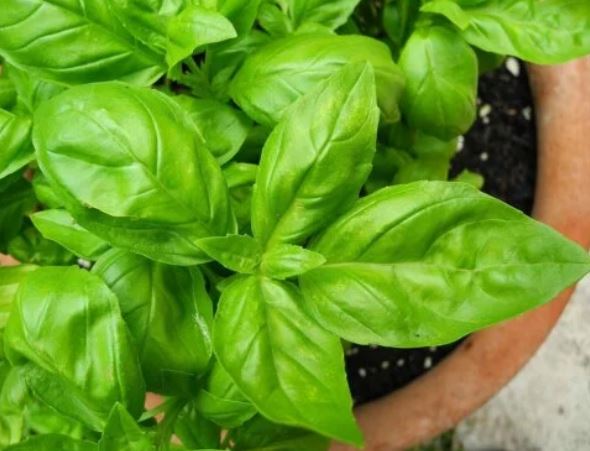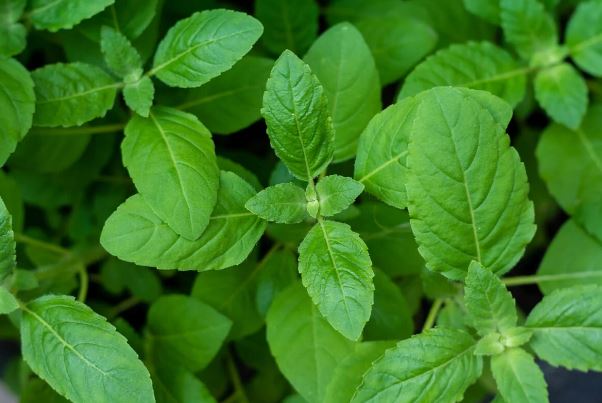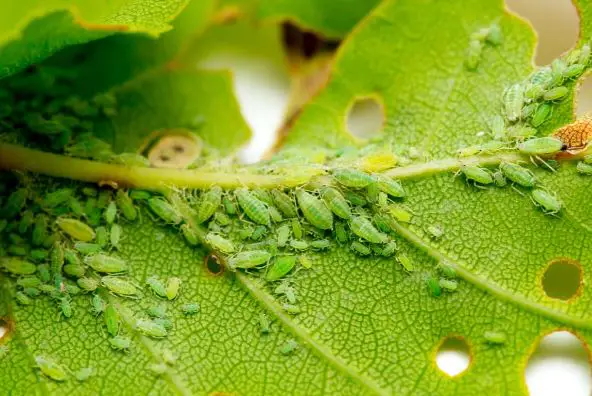Do you love the taste of basil and want to produce it in your own garden? Good news: this is an easy plant to grow. Learn about their care in this article.

Basil is an aromatic and herbaceous plant native to Asia, specifically India. Because of its delicious flavor, it spread throughout the world and is popular in the cuisine of many countries, such as those in the Mediterranean region. In this article we will share tips for the care of a basil plant.
Also known as basilisk, alhábega or manjericao, in addition to being a plant with an exquisite flavor, it has multiple medicinal properties that promote digestion, soothe some pain and accelerate the healing of wounds on the skin.
Planting some basil plants at home will allow you to have this delicious plant on hand to make dishes such as pesto sauce, aromatic waters, salads, green smoothies and even ice cream. Additionally, it is also helpful in keeping mosquitoes away.
How often should a basil plant be watered?
In general, the basil plant needs constant watering to grow properly. However, your land must have good drainage. Therefore, it is convenient that the pot has holes in the bottom.
On the other hand, irrigation also depends on weather conditions. If it is a hot climate, it may be necessary to water it every day with small amounts. If it is winter, watering every other day will suffice.
How to prune a basil plant?
Like most plants, weed and dead basil leaves should be removed regularly. In addition, it is necessary to make cuts in its stems to allow a lush growth for longer. This topping must be done below the bud, in order to delay flowering.
The reason that explains the need to prune the plant in this way is that it is an annual herbaceous, so once it blooms it dries and withers. However, its seeds can be collected to continue maintaining the crop. Pruning should be done every 3 to 4 weeks.

The basil plant needs watering without getting waterlogged and must be pruned to prolong its life.
General cares for basil care
The scientific name for basil is Ocimum basilicum L and there are numerous varieties of it. The most popular are Greek basil (Ocimum basilicum minimun), purple (Ocimum basilicum purpurascens), Genovese (Ocimum basilicum ‘Genovese’), fine (Ocimum minimum), cinnamon (Ocimum basilicum ‘Cinnamon’) and basil lemon (Ocimum basilicum “citriodora”).
After choosing the variety of basil that you want to grow in your garden, it is necessary that you have a pot or an area in the garden to plant it. You can buy the seeds or the seedling.
1. It guarantees a suitable soil for its development
A publication of the Antonio Narro Autonomous Agrarian University of Mexico indicates that the ideal soil for basil cultivation must be light and permeable, with good drainage, since stagnations kill it. To ensure that drainage it is advisable to mix the earth with some sand. Also, the soil can have a pH between 4.3 and 8.2.
2. Provide nutrients for growth
The basil plant is very grateful for a soil rich in organic matter. It is advisable to add this type of material before sowing.
In addition, the vermicompost suits him very well. This fertilization should be done every 20 days, in small quantities.
3. Put it in a good place
The basil plant needs constant sunlight to develop and grow healthy. However, it is suitable for both indoor and outdoor environments. It can even thrive in a semi-shady environment.
4. Ensures an ideal temperature
Basil plants require a temperature between 15 and 25 degrees Celsius for proper growth. If you live in a very cold area or spend the winter, it is a good option to have it inside. It does not need a very large pot to grow properly.
5. Take advantage of the seeds
As the basil plant is annual, it is important that you take advantage of its seeds to reproduce it. To achieve this you must wait for the flowers to dry; when they turn brown.
You must cut them to extract the small black seeds that are hidden between the flower. Then you store them in a glass jar and allow them to dry very well.
Some enemies of basil plants
Although basil plants tend to ward off mosquitoes, there are other animals that often attack and damage it. In addition, certain environmental conditions can be its enemy and end up withering it.
Below we will point out those circumstances that you should avoid to take proper care of a basil plant.
Aphids
Aphids are a common pest that weakens plants as they feed on sap. You can identify them because basil begins to have holes in its leaves and stems.
In addition, they excrete a sweet liquid that attracts ants. However, there are natural remedies that can help you, such as a spray with onion and garlic.
Trips
They are very small black bugs that infiltrate the leaves, flowers and folds of the plant to eat its nutrients. They can be identified by the appearance of small spots.
One way to prevent is to spray with a spray on the leaves, as they do not like water. However, it is better with rainwater, as tap water can contain chlorine. Also, you should not sprinkle water when it is receiving strong sun because the leaves will burn.
Slugs
Snails and slugs love many garden plants, and basil is no exception. Therefore, you must prevent its appearance.
You can identify them by the holes and bites they leave in the leaves. They also tend to leave a shiny, whitish stain with their slime.

Aphids leave holes in the leaves because they eat them. They must be identified quickly to protect the crop.
Too much sun
Basil needs moisture to thrive. Consequently, when it receives an excess of sun it tends to burn and wilt. In this regard, it is convenient to keep it hydrated and in some shade.
Frost and winds
The basil plant does not tolerate low temperatures; that is why frosts usually affect it a lot. In the same way, it is a plant that does not survive the winter outdoors. The best time to plant it is in early spring.
Basil is safe for your pets
People with pets often wonder about the safety of ornamental or garden plants before purchasing them for the home. The good news is that basil is a safe plant in case you have a dog or cat.
Now that you know about the care of a basil plant and its safety with pets, it is important that you consider leaving it out of the reach of animals because its taste can attract them and they will damage your crop. Also, as it is edible, it will be more hygienic this way.





